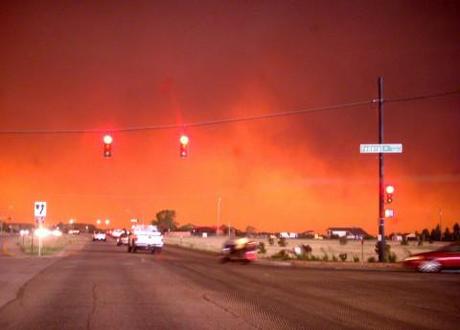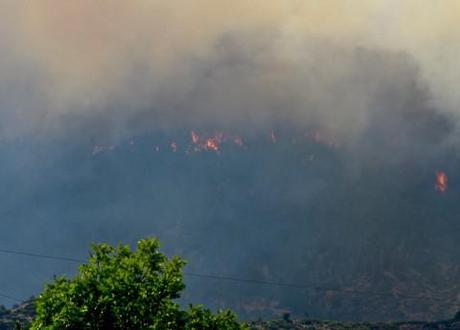 Fleeing the Colorado Spings forest fire.
Fleeing the Colorado Spings forest fire.
The background
As a two-mile wide wall of flame bears down on Colorado Springs, Colo., experts warn that more “super fires”, as they’re called, may be in the future.
The Waldo Canyon wildfire is now being called a “monster event” and a “super fire”, as officials warn that it is “not even remotely close to being contained,” NBC reported. It is unclear how the blaze began, but it is clear that it’s not going to end any time soon. With weather conditions working against firefighters, the fire is only expected to grow: On a scale of one to six on the Haines Index, which measures the potential for fire growth, officials say the fire will be a six by Friday evening. More than 32,000 people were ordered to evacuate from the area on Tuesday, with more forced to flee on Wednesday and Thursday. The blaze doubled in size to 24 square miles Wednesday night, claiming at least 250 homes, though possibly many more.
But this isn’t the only wildfire Colorado is currently battling – there are 11 more. And, say experts, these kinds of monster super fire are only going to become more frequent in the next few years.

Super fires? Get used to them
Peter Fulé, a longtime professor in the school of forestry at Northern Arizona University in Flagstaff, told The Los Angeles Times that a “perfect confluence” of factors is fueling the Waldo Canyon fire and would soon fuel others like it. Basically, modern firefighting has meant fewer small fires, while the waning timber industry has left more swathes of untamed forest, leading to a build up of forest fire fuel. At the same time, climate change has brought warming conditions, creating warmer, drier fire seasons that last longer. And this is only going to get worse.
Hope of preventing super fires
There is hope, however, Fulé told The Los Angeles Times and The Inquistr. Thinning younger and smaller trees, as well as underbrush, and using controlled burns to reduce the amount of available fuel for a super fire are the two most basic ways of preventing them. “There’s no panacea,” Fulé told The LA Times, but there are methods that work.
Forest Service calls to set forests back to natural state
The American Forest Service agrees, the Christian Science Monitor reported, and is attempting to “set the clock back to zero” and restore forests to “a more natural state, in which fire was a part of the landscape and in many instances was far less destructive.” US Forest Service Chief Tom Tidwell told the paper that the Service is accelerating restoration programmes by 20 percent each year in key areas; this year, they’re targeting 4 million acres, armed with a budget of around $1 billion. Their efforts could reduce the cost of fighting forest fires in some areas by as much as 50 percent. But, the paper noted, “In an era of tight budgets and taxed resources, forest officials acknowledged that restoration will be a challenge.”
Footage of the Waldo Canyon fire as it approached the US Air Force Academy

